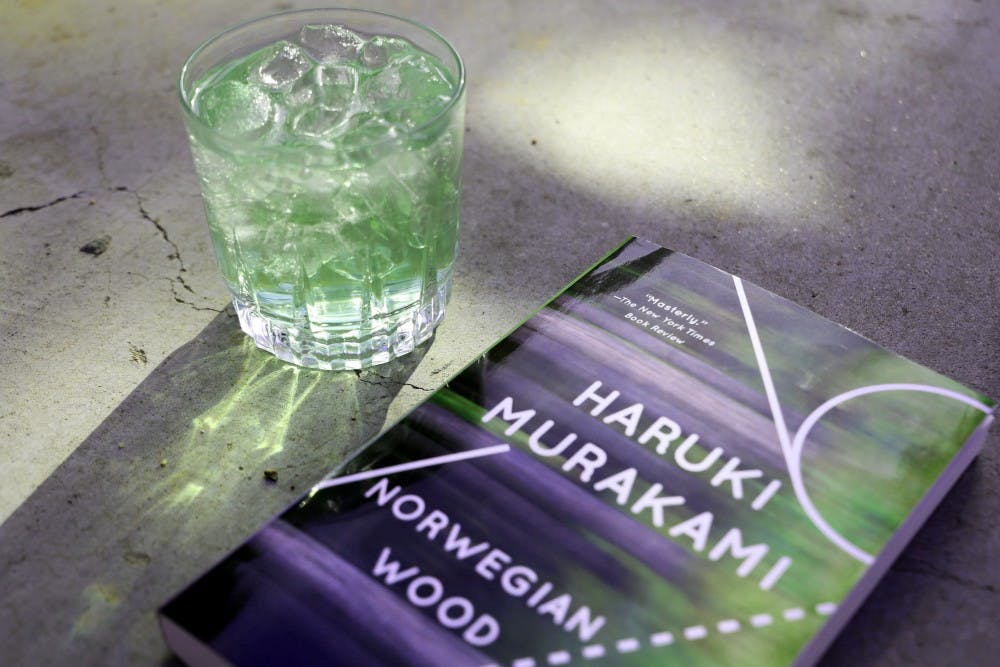Each week reporter Carson Abernethy drinks his way through great works of literature, reviewing books and the booze that inspired them.
"Norwegian Wood" is one of Haruki Murakami's most popular books, especially in his native Japan, where upon its publication he was catapulted to stardom, apparently much to his chagrin.
Murakami is not only one of Japan's greatest novelists, but one of the world's greatest living novelists, unfortunately a category with fewer and fewer members.
The novel recounts a flashback, prompted by the Beatles' "Norwegian Wood," of protagonist Toru Watanabe's college days amidst the backdrop of student protests and general unrest. Toru came of age in a tumultuous period both in his own life and in society, wrestling with issues like death, love and mental illness, and how all those things shape both his life and the lives of the people, particularly women, he cares about.
While most people tend to think of sake when alcohol and Japan are mentioned together, "Norwegian Wood" (and Murakami in general) has often been accused of not being fully Japanese, and therefore a Japanese drink would not be a true reflection of it. While Murakami's work was originally written in Japanese, it is influenced heavily by other cultures, particularly Americana. The Gimlet is a cocktail that combines two aspects of "Norwegian Wood" — it is tart and sweet (much like the ending of the novel), and was a favorite of Philip Marlowe, the detective protagonist of many of the works of Raymond Chandler, whom Murakami was heavily influenced by.
Recipe
Four parts gin or vodka
One part Rose's lime juice
Shake well with ice, and serve either in a chilled cocktail glass or on the rocks.
Prose: 3.5/5
Naturally one of the things that comes with reading a translation is not being able to read the book exactly as it was written. Instead it is filtered by a translator, and so it's hard to say if the awkward-sounding phrases at times are the fault of the writer or the translator. It seems the most accurate replication of the Japanese meaning into English isn't always the most ornate, and while many sentences are great, some have an awkward cadence. But Murakami is a talented writer regardless of what language you read him in, and his sentences are as easy to read as they are enjoyable.
Characterization: 4/5
The characterization in "Norwegian Wood" is one of its strengths. Toru, interestingly enough, is one of the less interesting characters. The novel is replete with interesting secondary characters — most of them women. Naoko's boyfriend commits suicide, who then haunts both her and Toru the entire novel. She is dark but beautiful, and much of the book's conflict is Toru trying desperately to get her to reciprocate the love he has for her. Midori is Toru's other love interest, who stands in complete contrast to Naoko, and Toru finds it difficult to choose between them. Other minor characters like Storm Trooper (a nickname for Toru's ultra-cleanly roommate) and Nagasawa (who shares Toru's love of literature and works like "The Great Gatsby") serve as really interesting characters, too.
Cohesiveness: 4/5
The flashback/epiphany is an interesting way of setting up the events of the story, as an older Toru reflects on the events that made him who he is today. Other than that, the story fits well together. It has a pretty straightforward progression, and ends somewhat irresolutely, which was a nice narrative choice.
Relevance: 3/5
The backdrop of "Norwegian Wood" is one marked with chaos and disorder, as students all over the world were protesting against the establishment and parading counterculture. It seems college students today are feeling the same way, while the riots and unrest may have settled down, the ethos and mood still remain.
Overall 3.5/5
"Norwegian Wood" trades the Kafkaesque magical realism/surrealism of Murakami's other novels for something more accessible. While it is by no means prototypical Murakami, it is still an interesting and enjoyable piece of his oeuvre. While there may be no talking cats or fish falling from the sky, "Norwegian Wood" still highlights a time anyone can relate to, and the feelings and thoughts that linger from it.
Related links:
Books & Booze: 'Of Mice and Men' by John Steinbeck
Books & Booze: 'The Sun Also Rises' by Ernest Hemingway
Reach the reporter at cabernet@asu.edu or follow @carson_ab on Twitter.
Like The State Press on Facebook and follow @statepress on Twitter.




